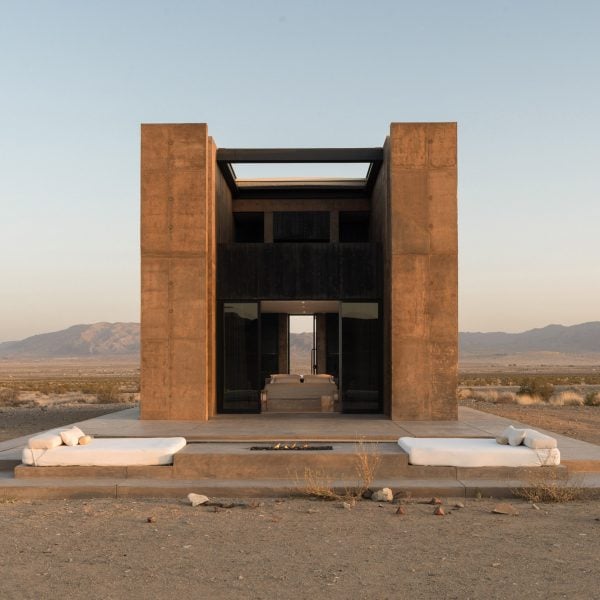California studio Malek Alqadi has created a series of monumental concrete hotel suites in the Mojave Desert, USA, informed by Middle Eastern archaeological sites.
Folly Mojave is a series of standalone structures in the middle of the Californian desert. It comprises five structures, one single-storey amenity space and four different suites with two storeys, designed by Malek Alqadi.
The structures were constructed primarily of poured-in-place, board-formed concrete and are monumental, with unadorned concrete facades punctuated by recesses.
For the suites, a cubic structure was placed on top of a plinth set in the middle of the arid landscape. The structures only take up a section of the plinth, and elevated pools were placed on the remainder.
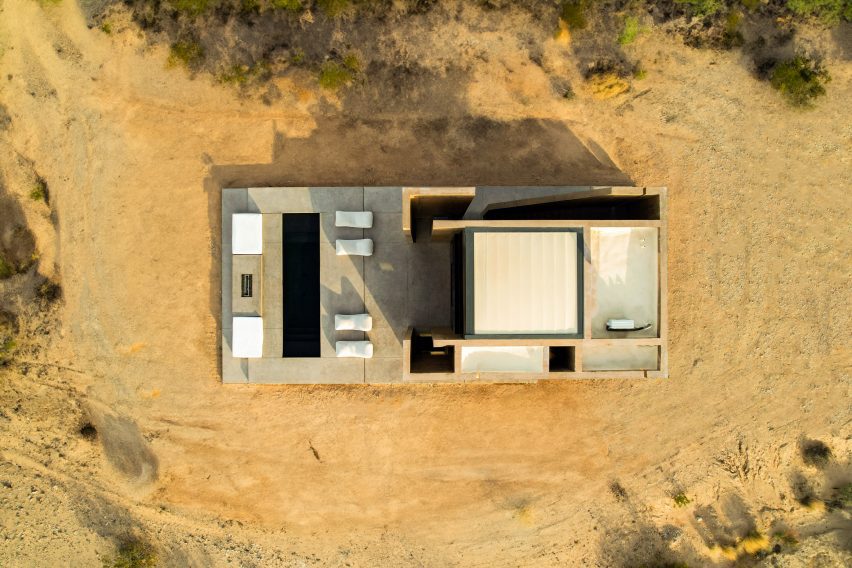
Within the concrete exterior is a smaller cube, clad in parts by charred wood. These details are meant to “contrast” the brutalism of the envelopes, Malek Alqadi founder Malek Alqadi told Dezeen.
The bottom floors hold a bedroom with unfinished walls and built-in blackened steel appliances, which is echoed in the frames of the sliding glass doors that lead from the sleeping area to the pool decks.
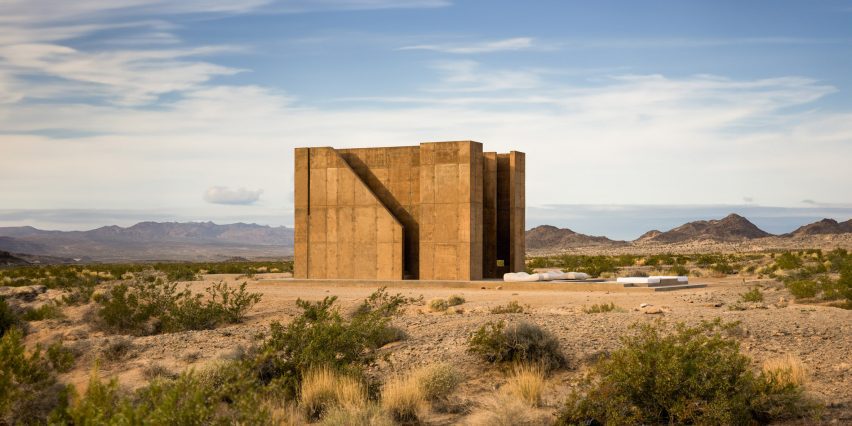
The voids between the interior and exterior envelopes are filled by amenities, and lead to a staircase, built directly into the structure, that allows access to a top-floor deck.
These decks have operable roofs and an open wall for viewing the sky and landscape. On the wall side, a tiled bar with stools features a heating element.
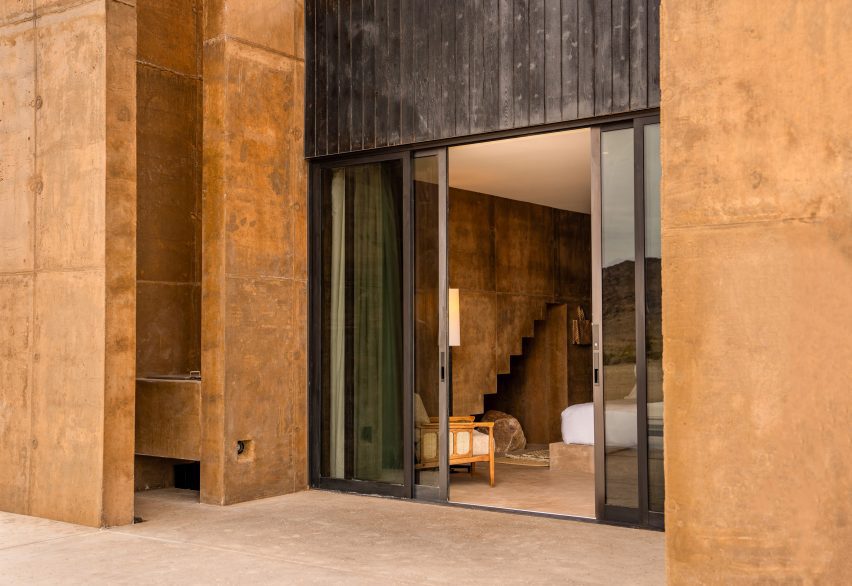
Similar materials and layouts were used for the single-storey gathering and amenities space on the property.
Here, the enclosed area is pushed to the back of the plinth, while two broad columns support a roof with a retractable cover that shades a lounge area with beds and a concrete bar with nesting stools. It has a pool similar to those found in the suits.
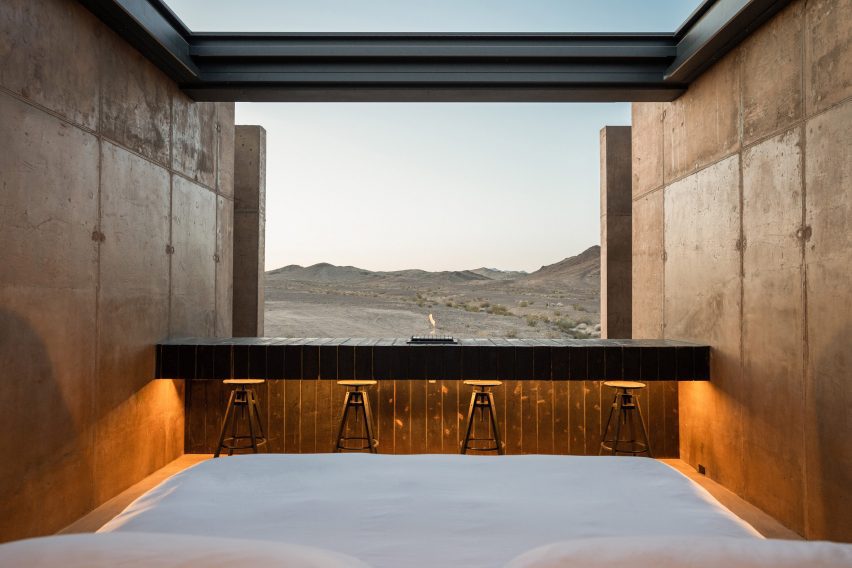
In the enclosed space there is a sauna and cold plunges, and showers have been affixed to the side of the structure.
Small nooks with additional seating were placed in recess around the perimeter.

According to Alqadi, the form of the structures was meant to reference the archaeological sites of the Middle East, such as Petra, near where he was born.
“Rooted in the ancient architectural principles of archaeological wonder, as a child I explored near my birthplace Petra, Jordan, and the enigmatic allure of Al-Ula in Saudi Arabia, my ongoing vision is to seek to create spaces that are both reverent, resilient, and rooted in my origins,” said Alqadi.
“Rooted in the agrarian heritage of my upbringing and informed by rigorous academic research, my approach seeks to bridge the chasm between ancient architectural principles and modern technological advancements.”
Alqad added that he sought to synthesize “ancestral wisdom and contemporary innovation” for the vacation property and allow people to be immersed in the environment.
This led to an off-the-grid approach meant to “pushes the boundaries of sustainable design”.
The property derives its water from an on-site well and was outfitted with a grey water system that takes water used in the amenities and facilities and reuses them to irrigate the landscape.
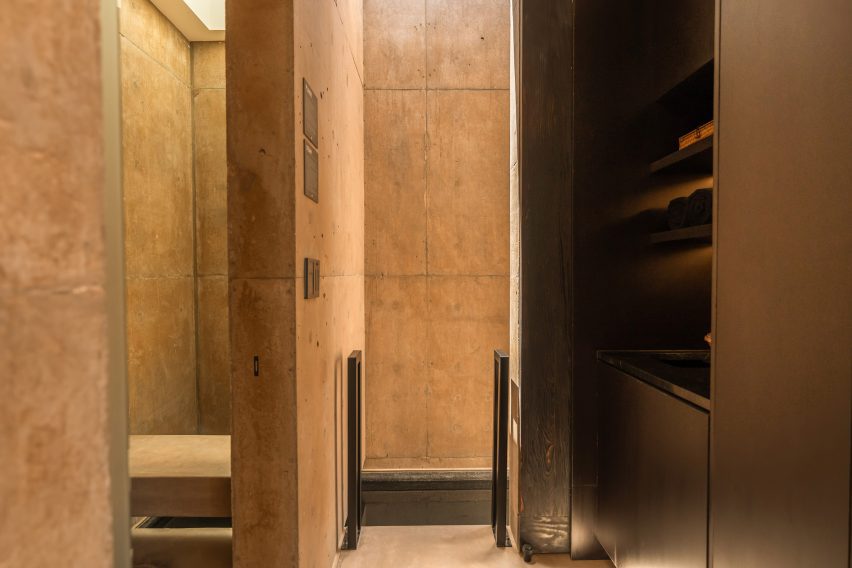
A series of detached solar panel systems power the entirety of the property.
Other properties that utilise ancient architectural forms with contemporary technology and building techniques include a vacation house in Puerto Escondido by Carlos H Matos.
The photography is by Johnny Prehn.

